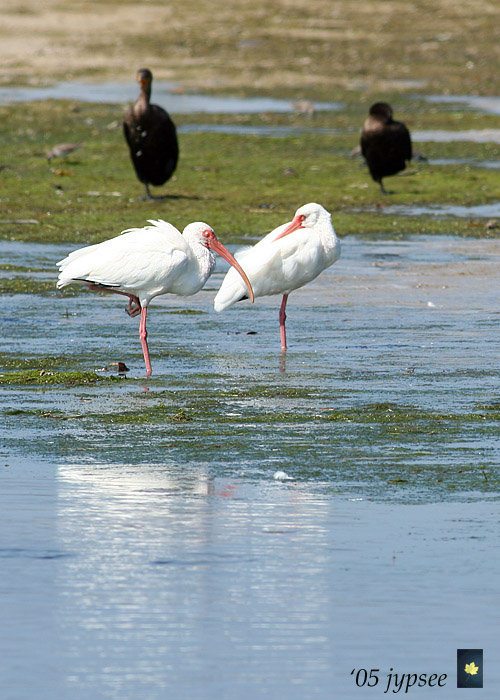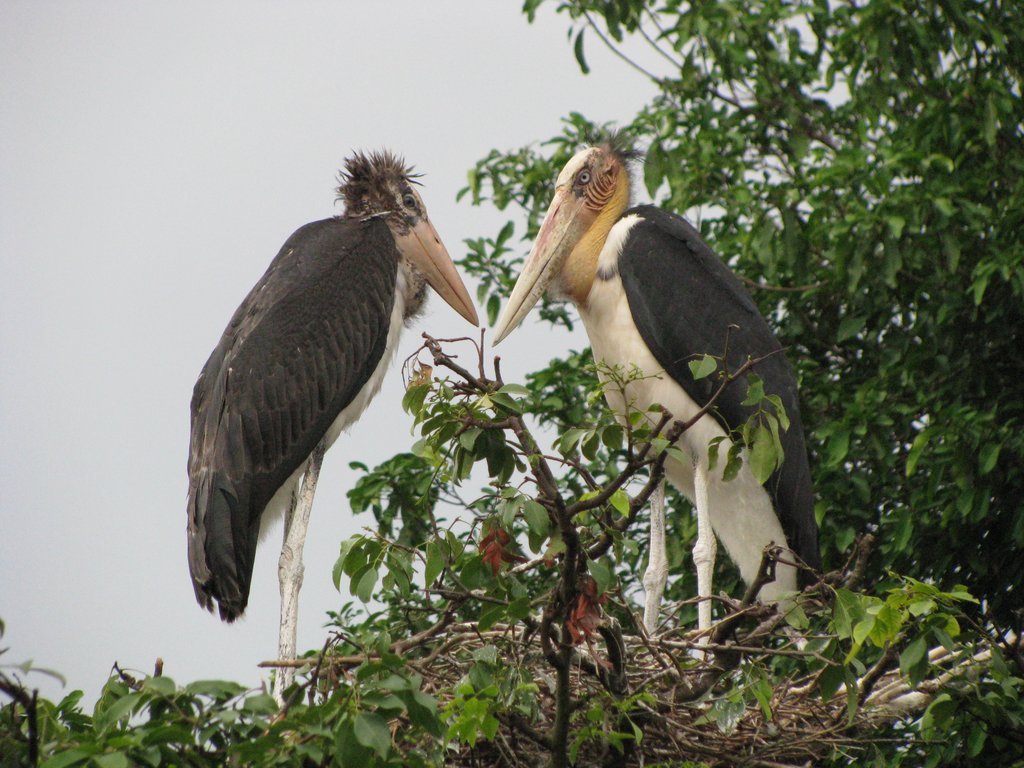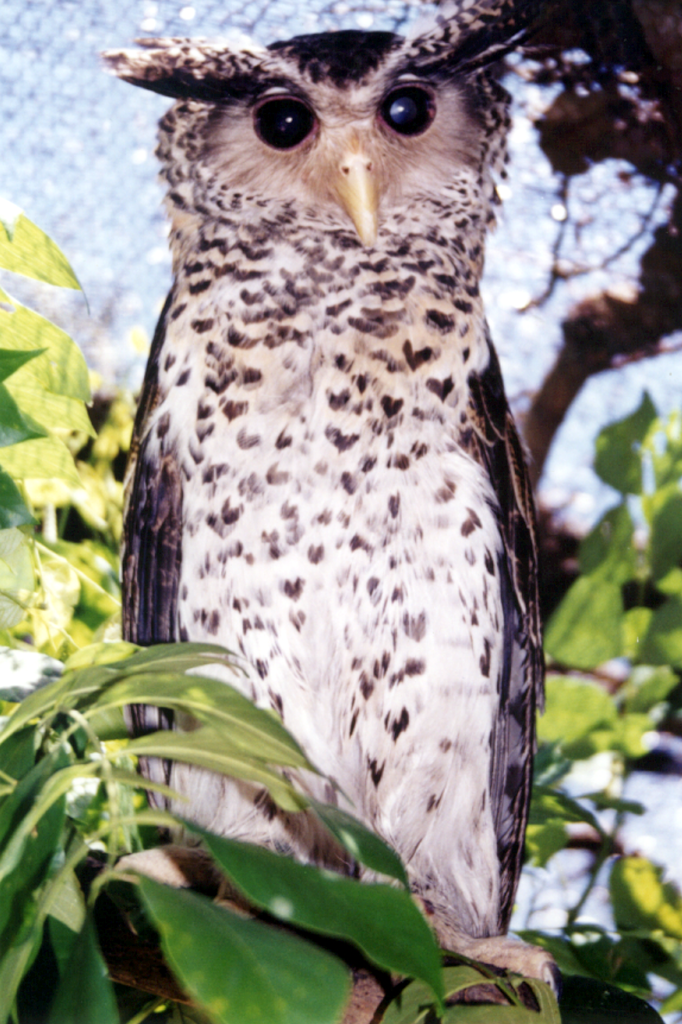By Michael Zwirn | Director US Operations
Avian influenza – “bird flu” – is one of the most terrifying diseases in Asia. Strains of the H5N1 virus have probably existed for thousands of years, but periodic mutations can lead to widespread deaths of not only birds, but people and other animals as well, including cat species.
In 2003-2004, a massive outbreak of bird flu caused the deaths of hundreds of birds at Phnom Tamao Wildlife Rescue Center, and also caused illnesses in the rescued cat species, including tigers, and other large cats – the first time the disease was ever found to affect felines. In 2011, bird flu has return to Cambodia. Eight people have been reported dead across the country in the past several months, and birds at Phnom Tamao have also fallen ill and died. This time, however, our Care for Rescued Wildlife program staff are better prepared, and are responding accordingly.
On July 12, 2011, the first bird deaths attributed to the most recent outbreak of avian influenza were reported - two spotted wood owls. The bodies of the dead birds were sent to the Cambodian government laboratory for testing animal disease, and they came back positive for H5N1. Other birds on Lakeside and in Quarantine died. The outbreak continued for around five days. In total, our staff found 55 birds at Phnom Tamao that died in the five-day span, including storks, greater and lesser adjutants, pelicans, and several owl species. More migratory or semi-resident birds surely died as well, with populations of lesser adjutants, painted storks, and spot-billed pelicans in significant decline.
Although tragic, this outbreak has so far been nowhere near as damaging as the first in 2003-2004. Wildlife Alliance and Forestry Administration officials took immediate action and were able to contain the disease. The section of Phnom Tamao housing the birds was closed down and disinfectant was sprayed in the relevant areas. Tires of vehicles were also disinfected and only essential staff were allowed to enter the infected areas. From a conservation perspective, the saddest loss is the two endangered greater adjutants, but the most threatened animals, like Sarus cranes, were transferred further away to minimize the risk of disease transmission.
The source of the illness is surely in local farms. We had been told that the disease was hitting local poultry farms in Takeo province, which is undoubtedly where the most recent outbreak originated.
While the initial spasm of bird deaths occurred in a very rapid period of a few days, there have been further bird deaths at PTWRC after the main outbreak. On July 20th a black-crowned night heron died in the Waterbird Aviary. On July 22nd a lesser adjutant was found at Lakeside and on July 31st a woolly-necked stork died in the Aviary. We are also closely monitoring the number of the semi-migratory birds which return each year to Phnom Tamao’s lakeside area from their breeding grounds. We see that spot-billed pelicans and painted stork numbers have dropped drastically, demonstrating the widespread severity and ease of transmission of the disease.
To ensure the safety of the people and animals at Phnom Tamao, Wildlife Alliance is working with the Forestry Administration to continue to implement bio-safety protocols throughout the Rescue Center – monitoring incoming animals carefully and isolating them in Quarantine, feeding the large cats only poultry from known reliable sources, and disinfecting vehicles and people who are working with the birds in our Aviary.
Nick Marx, director of the Care for Rescued Wildlife program, feels strongly that the source of the outbreaks is the poor management of domestic poultry. He says, "This terrible disease will continue to ravage both wild and domestic bird populations until we keep our poultry more humanely, dispose of dead bodies more efficiently and behave more responsibly when disease does strike rather than selling hens on before they succumb to the illness. ...and perhaps be prepared to pay a little more for our food." He also notes that, "None of the fowl at Phnom Tamao suffered from this outbreak - peafowl, jungle fowl or pheasants. This indicates that these birds are actually less susceptible than raptors, pelicans, cranes, storks, and hornbills."
Caring for rescued wild animals is not an easy business, and death is an unfortunate part of the job. We are grateful for the many individual and institutional supporters of our Care for Rescued Wildlife program, whose gifts enable us to respond to wildlife emergencies like the bird flu outbreak. To support our Care for Rescued Wildlife program please donate now.
Links:
Project reports on GlobalGiving are posted directly to globalgiving.org by Project Leaders as they are completed, generally every 3-4 months. To protect the integrity of these documents, GlobalGiving does not alter them; therefore you may find some language or formatting issues.
If you donate to this project or have donated to this project, you can receive an email when this project posts a report. You can also subscribe for reports without donating.
Support this important cause by creating a personalized fundraising page.
Start a Fundraiser


